Pian Upe Game Reserve is one of the largest wildlife conservation areas in Uganda – second only to the Murchison Falls National Park. It is located in the Karamoja region in the northeastern part of Uganda. The reserve covers an area of about 2,788 square kilometers and is found between Kidepo National park and Mount Elgon National Park. Pian Upe is bordered by the Bokora Wildlife Reserve and Matheniko game reserve in different directions. Unlike Matheniko and Bokora, Pian Upe game reserve is part of the Mount Elgon Conservation Area.
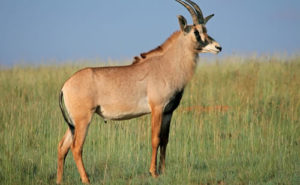 Pian Upe is very close to the Eastern town of Mbale. It takes about 2 hours to reach the reserve from Mbale town and 6 from Kampala city. The area started as an animal sanctuary in 1958 before being upgraded into a wildlife reserve in the 1960s. Pian Upe Game reserve experiences semi-arid conditions with one major wet/rainy season in a year. The plants and animals found have evolved to survive without water for long periods during certain days of the year. The vegetation includes vast untouched grassland and woodlands. The main tree species are desert date and red acacia. Other species include Harrisonia abyssinica, red spike-thorns and bushwillows. Shrubs like woolly caper bush and butterfly plea dominate much of the reserve. Other vegetation species found in the vast plains include lemon grasses, thatching grass, beard grass, red nut sedge and bristle grasses.
Pian Upe is very close to the Eastern town of Mbale. It takes about 2 hours to reach the reserve from Mbale town and 6 from Kampala city. The area started as an animal sanctuary in 1958 before being upgraded into a wildlife reserve in the 1960s. Pian Upe Game reserve experiences semi-arid conditions with one major wet/rainy season in a year. The plants and animals found have evolved to survive without water for long periods during certain days of the year. The vegetation includes vast untouched grassland and woodlands. The main tree species are desert date and red acacia. Other species include Harrisonia abyssinica, red spike-thorns and bushwillows. Shrubs like woolly caper bush and butterfly plea dominate much of the reserve. Other vegetation species found in the vast plains include lemon grasses, thatching grass, beard grass, red nut sedge and bristle grasses.
The most striking thing about Pian Upe wildlife reserve is a landscape that consists of vast plains, rocky outcrops and mountains. Pian Upe Wildlife reserve is home to a respectable collection of large mammals, birds and reptiles. Visitors to the reserve should expect to see zebras, elands, gazelles and oribi. Other animals include spotted hyenas, civets, jackals, serval cats, cheetahs, leopards, topi, wildcats, buffaloes, roan antelopes, reebucks, Duikers, Dik-dik, the 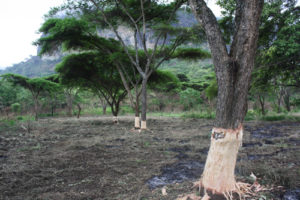 Ugandan Kob, waterbucks, hares, porcupines, the rock hyrax, aardvark and hedgehogs. The primates include Olive baboons, patas monkey and Vervet monkeys. Pian Upe game reserve is also home to reptiles like rock pythons, puff adders, water snakes, skinks, geckos, chameleons and monitor lizards. The most attractive bird here is the ostrich.
Ugandan Kob, waterbucks, hares, porcupines, the rock hyrax, aardvark and hedgehogs. The primates include Olive baboons, patas monkey and Vervet monkeys. Pian Upe game reserve is also home to reptiles like rock pythons, puff adders, water snakes, skinks, geckos, chameleons and monitor lizards. The most attractive bird here is the ostrich.
Two main tribes live near this vast wilderness – The Pian who are a sub-division of the Karamojong and the Upe who are a mixture of both the Karamojong and Kalenjin. Pian Upe Wildlife reserve derives its name from these two indigenous African tribes.
Threats and Challenges
Pian Upe game reserve is under the control of the Uganda Wildlife Authority through the Mountain Elgon Conservation department. The greatest threat to this vast wilderness is encroachment by humans. The area close to the Greek River is the most threatened because of human occupation and farming activities.
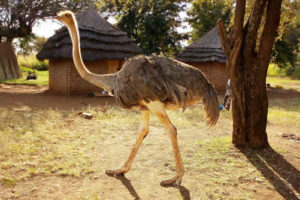 During the colonial period and immediately after independence, Pian Upe Wildlife reserve had a high density of wild animals. With the insecurity during the Idi Amin regime and the early 1980’s, animals were poached excessively. Later in the early 90’s armed Karamojong warriors and rebel elements of Joseph Kony caused havoc into area. After the rebels were flushed out and the Karamojong warriors disarmed, the government has embarked on restoring the game reserve back to its former glory. The government has registered significant progress but poaching still remains a problem.
During the colonial period and immediately after independence, Pian Upe Wildlife reserve had a high density of wild animals. With the insecurity during the Idi Amin regime and the early 1980’s, animals were poached excessively. Later in the early 90’s armed Karamojong warriors and rebel elements of Joseph Kony caused havoc into area. After the rebels were flushed out and the Karamojong warriors disarmed, the government has embarked on restoring the game reserve back to its former glory. The government has registered significant progress but poaching still remains a problem.
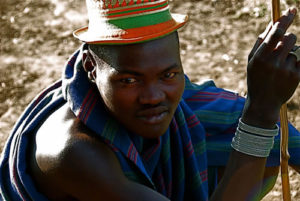 The Karamojong people are increasing starting to rely more on farming as a source of livelihood after losing many of their cattle to droughts and cattle raiding from other nomadic tribes in neighboring Kenya. Farming is unpredictable in this semi-arid are and many are tempted to hunt the wild animals in the reserve. Poaching threats also come from nomadic pastoralists originating from Kenya. The borders are not properly guarded and nomadic herdsmen from Kenya cross over to Uganda in search of water and food for their animals. Once in Uganda, they hunt down wild animals for meat and also cut down trees for their temporary shelters.
The Karamojong people are increasing starting to rely more on farming as a source of livelihood after losing many of their cattle to droughts and cattle raiding from other nomadic tribes in neighboring Kenya. Farming is unpredictable in this semi-arid are and many are tempted to hunt the wild animals in the reserve. Poaching threats also come from nomadic pastoralists originating from Kenya. The borders are not properly guarded and nomadic herdsmen from Kenya cross over to Uganda in search of water and food for their animals. Once in Uganda, they hunt down wild animals for meat and also cut down trees for their temporary shelters.
This poaching by the Kenyan herdsmen forces some of the animals to flee towards the Kenyan side of the border. This is a threat to the tourism potential of the reserve and more tough measures should be put in place to discourage the nomads from frustrating the significant progress made by the Uganda Wildlife Authority.
Facts about Pian Upe Wildlife Reserve
- To reach Pian Upe Wildlife reserve from Kampala, you need to first drive to Mbale town. This journey takes 5 hours. The park offices are found along the Mbale-Moroto highway. Reaching the park offices from Mbale involves traveling for another 90 kilometers (2 hours’ drive). You will know you have reached as soon as you pass the Chepsukunya Trading Center. It is at the offices that you can make all booking and other arrangements for activities in the reserve.
- A visit to the Pian Upe wildlife reserve can be combined with a safari to Kidepo Valley national park or visiting the Sipi Falls.
- In 2003, there was a proposal to turn the reserve into a farm for planting fruits but people and the Uganda Wildlife Authority protested and the plan was abandoned.
- There is potential for mineral mining within the area. Mercury wells have been identified at the Mount Kadam while gold and oil is also believed to be lying underneath the vast plains. It is difficult at this point to know how these discoveries will affect the reserve in the future.
Top things to do in Pian Upe Game Reserve
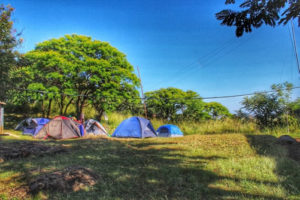 Given its remoteness, Pian Upe game reserve may not get the same attention like the other more known national parks in Uganda. However, those who want to discover something different will find visiting the reserve very rewarding. The game reserve allows for privacy and an opportunity to explore a true pristine African wilderness – away from the crowds. Let us discuss some of the top attractions in Pian Upe Wildlife Reserve.
Given its remoteness, Pian Upe game reserve may not get the same attention like the other more known national parks in Uganda. However, those who want to discover something different will find visiting the reserve very rewarding. The game reserve allows for privacy and an opportunity to explore a true pristine African wilderness – away from the crowds. Let us discuss some of the top attractions in Pian Upe Wildlife Reserve.
Game drives: A guided game drive along 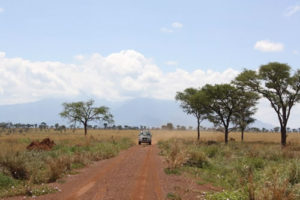 the vast plains of the Pian Upe game reserve presents opportunities to spot rare animals like cheetahs, ostriches and the Roan antelope. This is the only place where you can see the roan antelope in Uganda. Game drives in Pian Upe Wildlife reserve are great during the dry season but can get nasty during the rainy season as already noted earlier. You need a good 4 Wheel drive vehicle to maneuver through the muddy roads during the rainy season or one with good air-conditioning during the dusty/dry season. Roads within the reserve are not well maintained and you often have to create your own if you want to reach certain areas of the reserve.
the vast plains of the Pian Upe game reserve presents opportunities to spot rare animals like cheetahs, ostriches and the Roan antelope. This is the only place where you can see the roan antelope in Uganda. Game drives in Pian Upe Wildlife reserve are great during the dry season but can get nasty during the rainy season as already noted earlier. You need a good 4 Wheel drive vehicle to maneuver through the muddy roads during the rainy season or one with good air-conditioning during the dusty/dry season. Roads within the reserve are not well maintained and you often have to create your own if you want to reach certain areas of the reserve.
Birdwatching: When it comes to birds, Pian Upe wildlife reserve comes toe to toe with the largest national parks. In terms of bird density, it ranks 2nd only to Queen Elizabeth National Park. The most attractive bird species here is the giant ostrich. 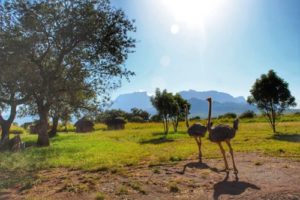 Ostriches find the vast dry plains ideal for running away from predators and taking care of their young. There are fewer large trees and vegetation enabling them to have a clear view of their surroundings and any approaching danger. Apart from ostriches, over 240 bird species can be sighted here. They include the African eagles, cormorants, cranes, darters, egrets, grass birds, hawks, herons, hornbills, jacanas, lapwings, owls, pelicans, plovers, turacos, vultures and weaver birds. The reserve has not been studied extensively by bird researchers and It is believed that there are other species yet to be discovered. The best place for birding is at the Cheposukunya hot springs.
Ostriches find the vast dry plains ideal for running away from predators and taking care of their young. There are fewer large trees and vegetation enabling them to have a clear view of their surroundings and any approaching danger. Apart from ostriches, over 240 bird species can be sighted here. They include the African eagles, cormorants, cranes, darters, egrets, grass birds, hawks, herons, hornbills, jacanas, lapwings, owls, pelicans, plovers, turacos, vultures and weaver birds. The reserve has not been studied extensively by bird researchers and It is believed that there are other species yet to be discovered. The best place for birding is at the Cheposukunya hot springs.
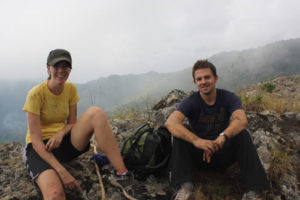 Mountain and rock climbing: One of the most striking features of the Pian Upe Wildlife reserve is its vast plains, rocks and mountains. Those who love exploring rocks or climbing less demanding mountains can try Mount Kadam. If Mount Kadam is too challenging, then one can start with one of the numerous large rocks.
Mountain and rock climbing: One of the most striking features of the Pian Upe Wildlife reserve is its vast plains, rocks and mountains. Those who love exploring rocks or climbing less demanding mountains can try Mount Kadam. If Mount Kadam is too challenging, then one can start with one of the numerous large rocks.
Nature Walks: Nature walks can be arranged with a guide from the Uganda Wildlife Authority. The nature walks provide arguably the best way to explore the reserve. The walks will live give you that great feeling of being in true African wilderness because there are very few humans to be seen. This is something that cannot be said for the major national parks like Murchison Falls. As you walk, you are bound to encounter various reptiles, birds, primates and herds of antelopes.
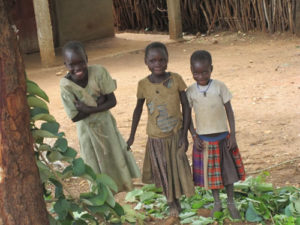 Cultural Encounters: As already mentioned earlier, the tribes living close to Pian Upe game reserve are the Karamajong and Kalenjin. These nomadic pastoralists how depend on their cattle for survival in this semi-arid region. Their culture is unique and kept intact despite continued exposure to modernization. While on a guided community walk, you can learn about how the locals go about their daily lives. You can go and watch evening traditional Karamajong dances/drama and marriage ceremonies if you are lucky. The best place to learn about the culture of the people in the area is the new Karamoja cultural museum located at the foothills of Mount Moroto. The museum holds a large collection of items/artifacts that describe the culture of the Karamajong.
Cultural Encounters: As already mentioned earlier, the tribes living close to Pian Upe game reserve are the Karamajong and Kalenjin. These nomadic pastoralists how depend on their cattle for survival in this semi-arid region. Their culture is unique and kept intact despite continued exposure to modernization. While on a guided community walk, you can learn about how the locals go about their daily lives. You can go and watch evening traditional Karamajong dances/drama and marriage ceremonies if you are lucky. The best place to learn about the culture of the people in the area is the new Karamoja cultural museum located at the foothills of Mount Moroto. The museum holds a large collection of items/artifacts that describe the culture of the Karamajong.
Cave exploration: Some of the rocks found within the game reserve hide ancient rock paintings. One such rock is the Napendio cave. This cave is considered sacred by the local people but hides amazing paintings of wild animals like baboons and antelopes. 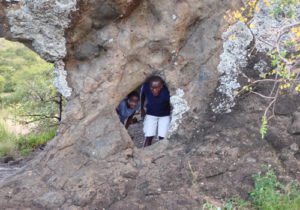 These paintings date back to thousands of years ago when the first humans settled in the area. Another interesting cave is the Napedet cave. The Napedet cave is located at a former key hunting area for the Pokwot and Karamajong people. It is here that meat was roasted and shared among hunters. Cooking stones dating back to over 500 years can still be seen here. The walls of the cave are decorated with ancient art showing animals like elands, warthogs, roan antelopes and giraffes. Apart from the paintings you can have a clear view of the vast wilderness and amazing wildlife from these caves. Bush camping is arranged close to the caves at a fee of 15,000 shillings.
These paintings date back to thousands of years ago when the first humans settled in the area. Another interesting cave is the Napedet cave. The Napedet cave is located at a former key hunting area for the Pokwot and Karamajong people. It is here that meat was roasted and shared among hunters. Cooking stones dating back to over 500 years can still be seen here. The walls of the cave are decorated with ancient art showing animals like elands, warthogs, roan antelopes and giraffes. Apart from the paintings you can have a clear view of the vast wilderness and amazing wildlife from these caves. Bush camping is arranged close to the caves at a fee of 15,000 shillings.
The best time to go to Pian Upe Wildlife Reserve
Pian Upe game reserve, receives two dry seasons and one rainy season. January to March is the driest part of the year. November to December is also dry but the vegetation is still green after the rains between April and October.
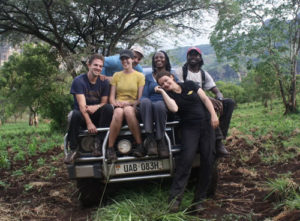 Most tourist prefer visiting during the dry season (January – March). The dry season allows for a clearer view of the animals as they gather around the few remaining water holes. The rainy season (April to October) is not ideal for visiting because of the poor conditions of the park roads. The roads become very muddy and difficult to navigate through even with the hardest of four-wheel drive vehicles. Some sections of the roads even get flooded as the rivers get filled with rain water. The animals have plenty of food and water at this time of the year and tend to move in small scattered groups making them difficult to spot them. The best time to visit in our opinion is during the months of November and December. This is still the dry season but the park is still green with less heat.
Most tourist prefer visiting during the dry season (January – March). The dry season allows for a clearer view of the animals as they gather around the few remaining water holes. The rainy season (April to October) is not ideal for visiting because of the poor conditions of the park roads. The roads become very muddy and difficult to navigate through even with the hardest of four-wheel drive vehicles. Some sections of the roads even get flooded as the rivers get filled with rain water. The animals have plenty of food and water at this time of the year and tend to move in small scattered groups making them difficult to spot them. The best time to visit in our opinion is during the months of November and December. This is still the dry season but the park is still green with less heat.
Packing list for safari in Pian Upe Game Reserve
Like in any major national park or reserve, you need to go to Pian Upe wildlife reserve prepared. As an international traveler, there are several things to take into consideration before coming to Uganda. A VISA and yellow fever vaccination card is a must. After those two are sorted, you need to also think about the following:
Warm and light clothes: For most parts of the year, Pian Upe wildlife reserve is very hot during the day and cold during the night. You need to come with warm clothes for the night and light clothes (sleeveless shirts and shorts) to deal with the extra heat especially during the dry season. The heat during the day can be intense especially if you are coming from the cold winter back in your country. Camp fires can be set to keep travelers warm during the night as they admire the amazing milky way.
Insect repellents: Like in most national parks of Uganda, this wildlife reserve has countless species of insects. Some have painful stings. An insect repellent will keep away the insects.
A hat and hiking shoes. A wide hat is important to help protect you from sunlight during the hot season. Sturdy shoes will help you navigate through difficult and rocky terrain while also protecting you from sharp trees and thorns.
Gadgets: To capture the amazing landscape and wildlife, move with a good camera. You may also need to move with your phone, laptop, tablet or binoculars. All these gadgets should have chargers and extra batteries if possible so that you don’t lose communication with family back home during your safari.
Accommodation in Pian Upe Game Reserve
Accommodation in Pian Upe game reserve is divided into two
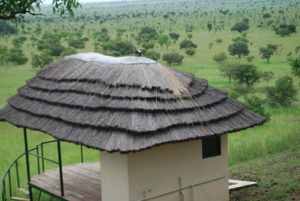 Accommodation within the game reserve: These consist of inexpensive manly self-contained tents and cottages from the Uganda wildlife Authority. Alternatively, you could go with your own tents and camp at the reserve at a cost of about $5. The meals provided include chicken, rice, rolex and spaghetti. If you are setting up your own camp, you could bring your own food and have it prepared.
Accommodation within the game reserve: These consist of inexpensive manly self-contained tents and cottages from the Uganda wildlife Authority. Alternatively, you could go with your own tents and camp at the reserve at a cost of about $5. The meals provided include chicken, rice, rolex and spaghetti. If you are setting up your own camp, you could bring your own food and have it prepared.
Accommodation in towns outside the reserve: Pian Upe Wildlife reserve is located close to the Sipi Falls and Mount Elgon National Park. You can decide to stay in one of the high quality lodges near Sipi Falls or in Mbale town. From Sipi falls, it takes between 1 to 2 hours to reach the reserve. From Mbale town, it takes 2 ½ hours to the reserve.
The cost of visiting Pian Upe Wildlife Reserve
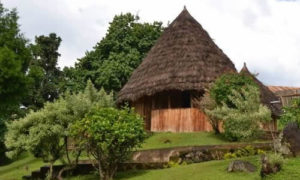 According to the latest information from the Uganda Wildlife Authority, park entrance costs $35 for international visitors. Foreign residents pay $25 while East African Nationals only need to pay 15000 Uganda shillings. Children of international travelers pay $5 while those from East African countries pay 2500 Uganda shillings. The game drives and guided nature walks are charged separately. Payments are made directly at the Uganda wildlife Authority offices. It is important to note that these prices do not include accommodation and transport outside the reserve. One needs to set aside money for accommodation either within or outside the park. International visitors are advised to book their safari through a reputable tour operator.
According to the latest information from the Uganda Wildlife Authority, park entrance costs $35 for international visitors. Foreign residents pay $25 while East African Nationals only need to pay 15000 Uganda shillings. Children of international travelers pay $5 while those from East African countries pay 2500 Uganda shillings. The game drives and guided nature walks are charged separately. Payments are made directly at the Uganda wildlife Authority offices. It is important to note that these prices do not include accommodation and transport outside the reserve. One needs to set aside money for accommodation either within or outside the park. International visitors are advised to book their safari through a reputable tour operator.

